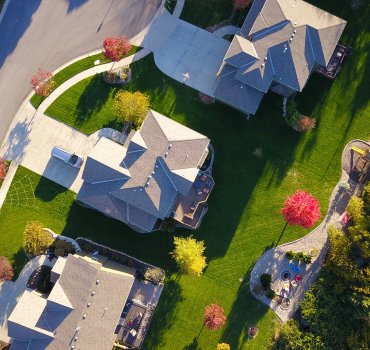

The latest valuations in Waipa show an increase of 24.8 per cent in capital value and an increase of 33.7 per cent in land value across the district.
An average rise in property values in Waipā of around 25 per cent in three years has underlined a growing demand to live in the region.
And the latest valuations which show industrial land values rising at a rate of 33.7 per cent compared to 9.1 percent for dairy and pastoral land will have some benefits for farmers.
It may mean in some cases their rates bill will fall.
The latest valuations were announced last week by Quotable Value Ltd and show an increase of 24.8 per cent in capital value and an increase of 33.7 per cent in land value across the district.
Council’s business support group manager Ken Morris said the council’s present focus was on compiling the 2020-21 budgets and it would be early next year before staff model the rating impacts of the new revaluations.
He said the figures were a positive indicator for the region.
“Around 47 per cent of our total rates is determined by capital value so the three yearly rating revaluations can result in significant changes in incidence.”
Incidence can be looked at in terms of slices in a pie – the sizes of the slices are influenced by changes in property values.
“In the absence of detailed modelling, the general guide is that the rates impacts are not about the valuation changes per se, but about the revaluation movements for individual properties compared to the average movement for the district,” Morris said.
“Therefore, in regard to the land use of properties, and with an average increase of 24.8 per cent across the district, Industrial land with an average increase of 33.7 per cent will have a bigger share of the rates pie than previously; and Dairy and Pastoral land at 9.1 per cent will have a significantly lesser share, and those properties might even see a reduction in their rates bill.”

New land valuations mean rates could drop for farmers.
The latest revaluation has seen the highest increases in value in the industrial, commercial, lifestyle and residential sectors.
He said the 28.3 per cent average increase across all residential properties was not too dissimilar to the all sector district average of 24.8 per cent.
“However, for some parts of the district there is a significant variance from the 24.8 per cent; examples being Kihikihi at 46 per cent and Te Pahu at 41.7 per cent. In those cases, the share of the pie will increase and therefore rates increases greater than the headline average rates increase number for the district are likely to be expected.”
The highest increase has been in Kihikihi and there were strong rises in Pirongia and Ohaupo.
“This is great news for our smaller towns which are experiencing rapid growth and development,” Morris said.
He said it was important to note that the owners of a $435,120 property in Kihikihi would pay the same rates as the owners of a $435,120 property anywhere in the ward, despite the different percentage increases.
According to figures from the Real Estate Institute of New Zealand (REINZ), sale rates have dropped by 20 per cent year-on-year with 84 Waipa properties sold in October 2019 compared to 101 in October 2018.
“In terms of prices, this would reflect what we’re seeing in many parts of the country with strong regional growth,” said Dee Crooks from the Real Estate Institute of New Zealand.
The property values in Waipa announced were 24.5 per cent in Cambridge to an average value of $668,000, 26 per cent in Leamington to $619,000, 31 per cent in Ohaupo to $503,000, 30 per cent in Te Awamutu to $500,000, 46 per cent in Kihikihi to $435,000, and 35 per cent in Pirongia to $577,000.
The overall worth of Waipā properties is up to $22.3 billion from $16.6 billion in the 2016.
Valuation notices will be sent to ratepayers on 25 November. If owners have concerns, they have until January 17, 2020 to object.
For more information on the 2019 revaluation is available on Council’s website.








